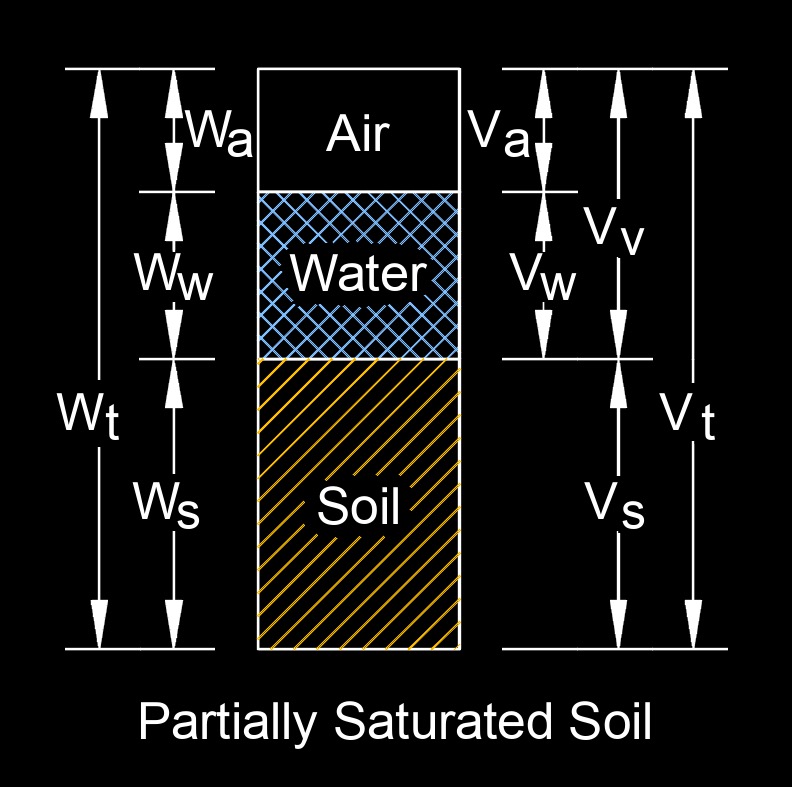Volume of Water
Volume of Water Formula |
||
|
\( V_w \;=\; k \cdot i \cdot A_c \cdot t \) (Volume of Water) \( k \;=\; \dfrac{ V_w }{ i \cdot A_c \cdot t }\) \( i \;=\; \dfrac{ V_w }{ k \cdot A_c \cdot t }\) \( A_c \;=\; \dfrac{ V_w }{ k \cdot i \cdot t }\) \( t \;=\; \dfrac{ V_w }{ k \cdot i \cdot A_c }\) |
||
| Symbol | English | Metric |
| \( V_w \) = Volume of Water | \(ft^3\) | \(m^3\) |
| \( k \) = Permeability Coefficient | \(ft \;/\; sec\) | \(m \;/\; s\) |
| \( i \) = Hydraulic Gradient | \(dimensionless\) | \(dimensionless\) |
| \( A_c \) = Area Cross-section | \(ft^2\) | \(m^2\) |
| \( t \) = Duration of Time for Collection of Water | \(sec\) | \(s\) |
Volume of water, abbreviated as \(V_w\), is the amount of water that a given volume of soil can hold or retain. This property is often expressed as soil moisture content and is an essential factor in agriculture, horticulture, and environmental science. Soil moisture content is typically measured as a percentage, representing the ratio of the volume of water present in the soil to the total volume of the soil. Soil moisture content can vary depending on several factors, including soil type, texture, porosity, and environmental conditions. Soils with larger particles and greater pore spaces, like sandy soils, may have a lower moisture retention capacity compared to finer textured soils, such as clay soils.


